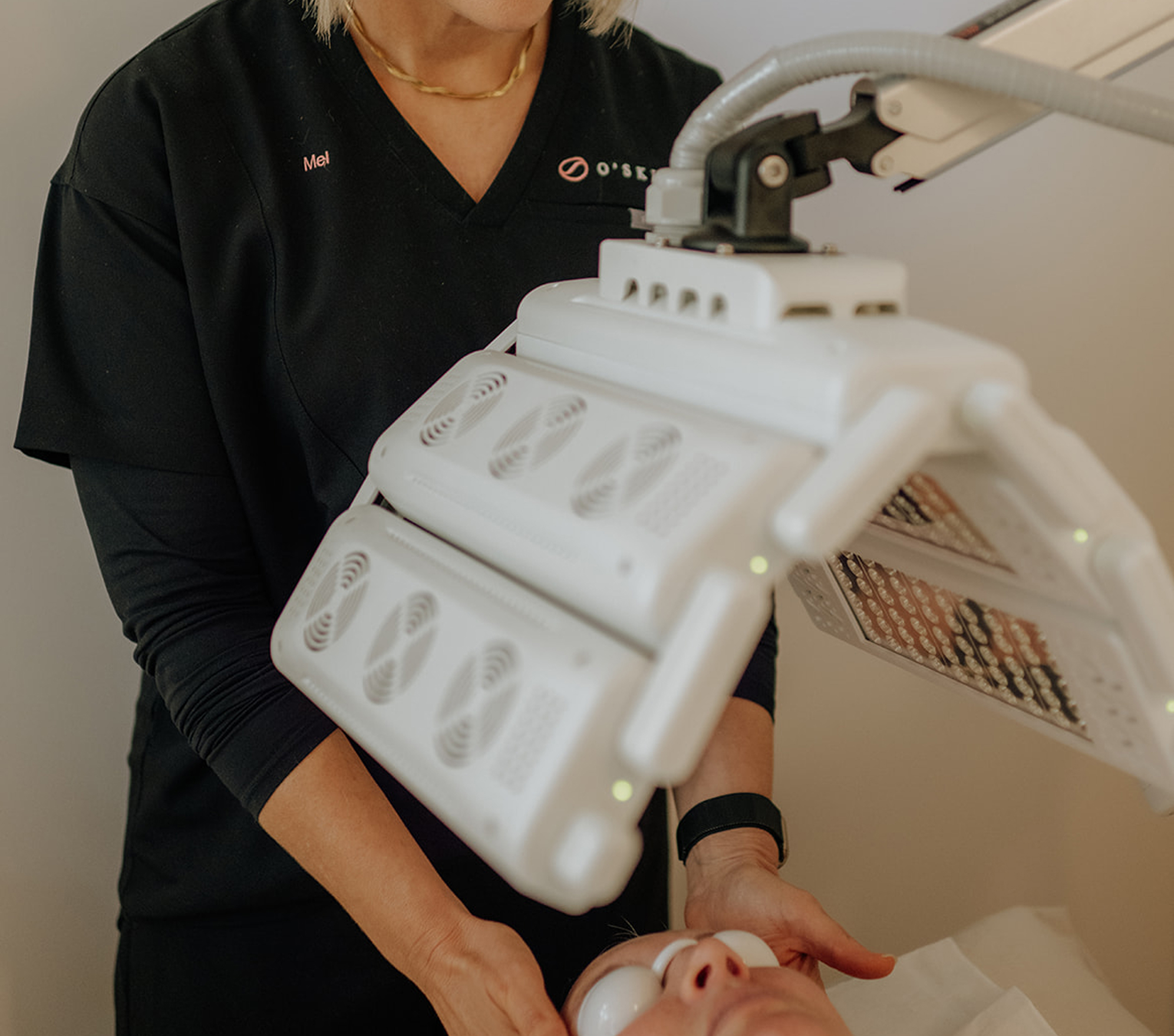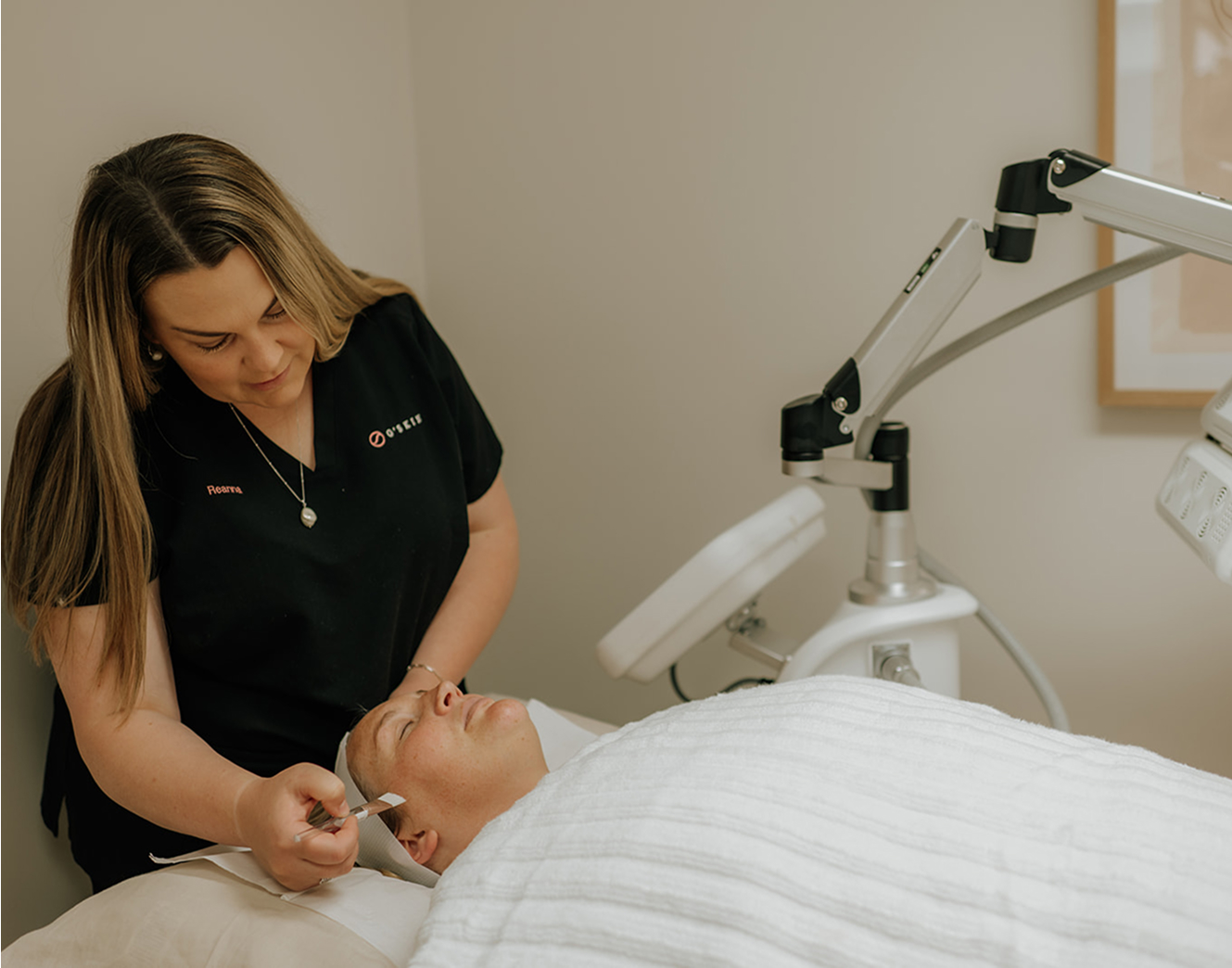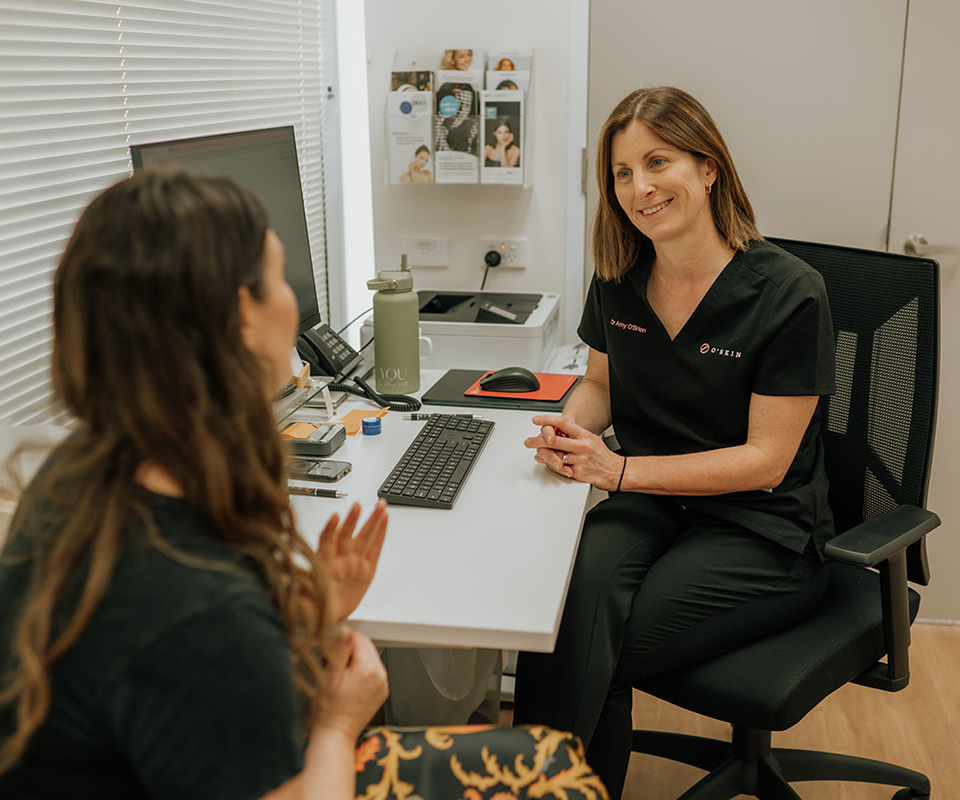Skin Cancer Treatment Options
Skin cancer is one of the most common forms of cancer, but it is also highly treatable when detected early. Depending on the type, size, location, and stage of the skin cancer, as well as the patient’s overall health, a variety of treatment options are available. Below is an overview of commonly used treatments:

What skin cancer treatment can O'Skin provide?
Surgical Options
Surgical options include both biopsy and excision.
A biopsy is often the first step in diagnosing skin cancer. A small tissue sample (such as a shave or punch biopsy) is removed and examined under a microscope to confirm the presence of cancer.
Surgical excision involves removing the tumour along with a margin of healthy tissue to ensure all cancer cells are eliminated. This can usually be performed in our rooms under local anaesthetic, with stitches used to close the wound. This is effective for basal cell carcinoma, squamous cell carcinoma and melanomas.
Medicated Creams
Topical creams include 5-Fluorouracil (5-FU), Imiquimod and a compounded cream composed of 5-FU and calcipotriol. 5-FU is a chemotherapy cream that targets and destroys cancerous or precancerous cells. It is effective for actinic keratosis and squamous cell carcinoma insitu. Imiquimod is an immune response modifier that stimulates the immune system to attack cancer cells and treats superficial basal cell carcinoma and actinic keratosis. Efucal is combination product used to treat precancerous lesions on the face. It usually provides a more rapid reaction in comparison to the other topical creams.
Cryotherapy
Cryotherapy uses liquid nitrogen to freeze and destroy cancerous cells which is commonly employed for actinic keratosis and some superficial skin cancers. It is quick and minimally invasive.
Photodynamic Therapy
PDT combines a light-sensitive medication with specific types of light to destroy cancer cells. This clinic is run by our nurses, who provide advice and close monitoring throughout the process.
Daylight PDT involves applying a photosensitising agent to the skin and exposing the area to natural daylight for two hours following application. It is minimally painful and suitable for areas such as the face, with actinic keratosis or sun damage.
Conventional PDT uses an artificial light source (LED light) after applying the photosensitising agent and allowing it to penetrate the skin for up to 3 hours. Conventional PDT is used to treat actinic keratosis, superficial basal cell carcinoma, and Bowen’s disease.
Laser-Assisted PDT is an intensive treatment to manage specific superficial skin cancers of more significant field change. A fractional ablative laser is used to prepare the skin. Immediately following this, the photosensitising agent is applied and allowed to penetrate the skin. A second laser is then used to activate the agent, providing a high level and precise treatment.
Preventive Measures
Preventive measures include sunscreen and skin care products. Daily use of broad- spectrum sunscreen (SPF 50+) reduces the risk of developing skin cancer and prevents recurrence. It is recommended that you reapply every two to four hours, especially after swimming or sweating. Skin care products containing antioxidants, retinoids, or peptides can support skin health and repair damage caused by UV exposure. Everyone at O’Skin understands the benefit of different products for your skin and can tailor a skin care plan to your needs.
How it works

Initial consultation
Your initial consultation is usually your skin check appointment where issues have been identified. Occasionally a skin cancer or precancerous change has been identified during an appointment such as an aesthetic or laser consult, or you have have been referred from another skin cancer clinic for specific treatment offered at O’Skin.
Treatment
At O’Skin there are several treatment options available for skin cancer and precancerous change. This includes the following:
- Surgical Interventions:
- Biopsies to confirm diagnoses.
- Excision of suspicious or malignant lesions.
- Nonsurgical Treatments:
- Sun protection and skincare advice.
- Cryotherapy for certain lesions.
- Prescription creams like 5-fluorouracil, imiquimod, or compounded products.
- Photodynamic Therapy (PDT):
- Daylight PDT: Convenient and less invasive.
- Conventional PDT: Clinic-based, effective treatment.
- Laser-Assisted PDT: Advanced option for specific cases.
Aftercare
You will be given detailed instructions on how to care for yourself as you recover following any intervention provided at O’Skin, whether you have had a surgical procedure, have been advised to use medical creams to treat lesions or have undergone PDT.
Important information
Skin cancer is a major health concern in Australia due to the country’s high levels of UV radiation, largely attributed to its geographic location, sunny climate, and outdoor lifestyle. Australia has one of the highest rates of skin cancer in the
world., with over 16,000 melanomas diagnosed annually and more than 1 million basal cell carcinoma (BCC) and squamous cell carcinoma (SCC). Two in three Australians will be diagnosed with some form of skin cancer by the age of 70. Early detection is vital, and we recommend self-examine skin regularly and seeing O’Skin for any suspicious spots.


Aftercare information
Following a surgical procedure it is important to rest and keep the wound dry for several days. This minimises the risk of bleeding and infection, allowing the wound to heal as quickly as possible and with minimal scarring.
Aftercare while undergoing nonsurgical interventions vary, depending on what treatment you have undertaken. General advice usually involves following the instructions given to you at the time of treatment, avoiding sun exposure for the treatment period and then protecting your skin with sunscreen (SPF 50+) for several weeks following afterwards. Allow your skin to heal without picking or scratching, using products advised to aid in the process.
Written instructions will be provided for any procedure undertaken at O’Skin.
Frequently asked questions
How long does a skin check take?
A standard full skin check typically takes 30 minutes. Limited and single spot checks are available and usually take 10-20 minutes.
How often should I get a skin check?
This depends on your risk factors. The Australian Guidelines do not recommend annual skin checks for general surveillance but encourage patients to self-monitor and present with any concerns. People with a history of skin cancer or high-risk factors may require frequent visits.
What are the warning signs of skin cancer?
Look out for new moles and spots that have an irregular shape or uneven colour. It’s also important to monitor sores that don’t heal, red, scaly patches or lumps on the skin. You are welcome to contact O’Skin for an appointment to review these lesions. It is important to mention that you have a specific spot of concern so we can expedite your appointment.
What is the best way to prevent skin cancer?
Australia has the highest rates of skin cancer in the world. Protect yourself by wearing broad-spectrum sunscreen daily (SPF 50+), seeking shade and avoiding peak sun hours , wearing protective clothing, hats, and sunglasses and performing regular self-checks. If you have any concerns on your skin, then make an appointment to see a doctor with an interest in skin cancer.
What happens if a suspicious mole is found?
If a suspicious lesion is detected, your doctor may perform a biopsy or excision. If skin cancer is confirmed, treatment options will be discussed, including excision, or other nonsurgical treatments.
Will I have a scar after skin cancer removal?
Scarring is inevitable when excising a lesion, but our doctors aim to minimise this by using precise techniques. Post-treatment care can also help improve healing.
Can you check moles for cosmetic concerns as well?
Yes, we can assess moles for both medical and cosmetic reasons. If removal is for cosmetic purposes, it will not be covered by Medicare.